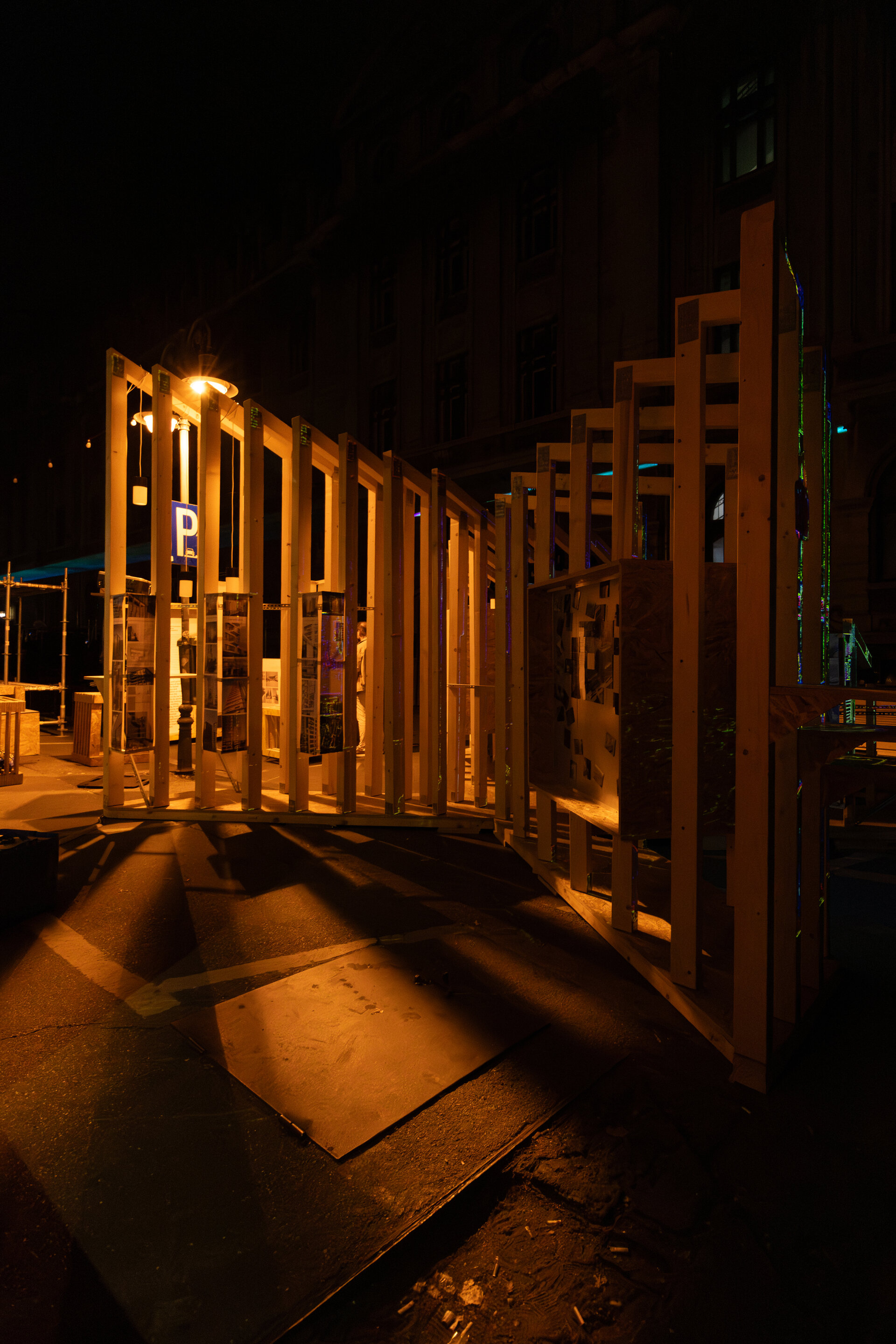
- Nomination for the “Research through Architecture / Architecture and Experiments” section
Optical Frames
Authors’ Comment
Title:
Optical Frames
Description:
Optical Frames is an architectural exploration of forms from Optical Art and innovative construction technologies, created for an Architecture Festival. Its unique structure is based on the principles of Optical Art, offering a dynamic visual experience. From a certain perspective, visitors can subtly decipher the reinterpretation of an identity element transformed into a three-dimensional composition, with which users can interact and participate within this pavilion.
This artistic interpretation has been realized through the use of serial planes made of spruce wood, each arranged at a 30 cm interax, forming a continuous three-dimensional volume. The structural elements have dimensions of 60 x 100 mm and 100 x 120 mm, contributing to the transition from a height of 1 meter to 3.6 meters, with the planes gradually increasing to create a sense of upward movement. Thicker sections are used in the upper area to ensure the stability of the assembly. Within this volume, OSB boxes have also been inserted, serving as supports for various exhibits.
Optical Frames also represents a technological experiment. Some structural joints have been produced using 3D printing with ASA plastic, a UV-resistant material. The print layers have been strategically arranged (similar to the principle of wood grain) to ensure resistance to the forces applied to the structure. This technical approach is part of the research process, as the pavilion tests innovative and sustainable solutions for architectural constructions.
Additionally, projections were made on this pavilion, with a video displayed on one of the boxes, while the rest of the pavilion was 3D scanned, with projections specifically tailored to the architectural form.
In addition to its aesthetic value, Optical Frames explores construction efficiency and the optimization of atypical forms. The assembly and installation of wooden frames, supported by 3D printed elements, involved an experimental process that brought improvements in guidance and simplification of complex construction procedures.
- The Yellow Line
- #OPENGIARDINI
- Optical Frames
- Limanu Summer School 2024 - Multicultural Heritage on the Edge
- Voice Your Place 2.0
- WOODJOIN Wood connecting - how it’s designed, how it’s made and how it works
- Reflected spaces
- Signs of Life
- Voices of the past. Muntari - the village lost in the mountains
- School of Planetary Gardeners TERRRA Brezoi




















